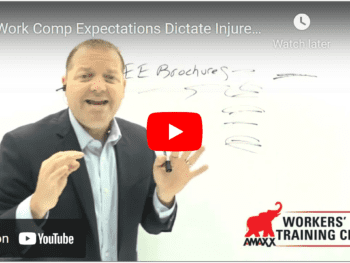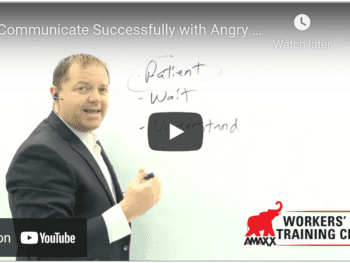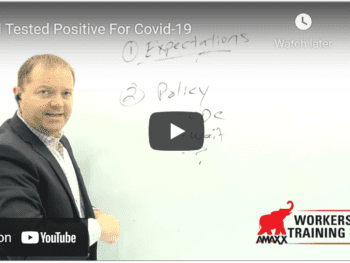Part of managing your workers’ comp budget is reducing indemnity payments to your injured workers. There are a variety of reasons why some workers may not return to work as soon as they can, such as disagreements with the doctor’s recommendation, complications with treatment, and in some rare cases, employees simply trying to stay out of work.
Proactive Communication Improves Outcome & Limits Costs
Whatever the case, company administration must use proactive communication and monitoring of injured employees to ensure treatment is progressing well and the treating doctor has projected a return-to-work date. In cases of disagreements with either State workers’ comp claims or the doctor’s prognosis, help your employees to resolve these issues as quickly as possible. A quick resolution equals a quick return to work and limits your costs. Think: modified duty.
Click Link to Access Free PDF Download
“9-Element Blueprint To Create Your Workers’ Comp Employee Brochure”
Some people may think — Why do I need to bother with such a plan, when the insurance company is paying off the claim?
The insurance company is paying the claim, but you still cover your deductible (or premium in guarantee cost). And, depending upon per incident costs, an employee suffering a moderate injury could cost as much as $35,000.00.
Take the approach of a well-informed and concerned employer concerned with both safety in the workplace, but also with the injured worker’s recovery and return to work after an injury. Weekly or monthly safety and work practices meetings help reinforce company policy and procedure for safe work related conduct and maintaining a safe work environment.
Five Things to Include in Your Workers’ Comp Communication Policy
Your communication policy as a part of your injury reporting and claims process must include:
- A first day phone call or visit to the injured employee.
- Communication with the doctor on prognosis, a reasonable treatment plan, and estimated date for a return to work.
- Documentation of every accident/injury.
- Investigate any claims raising “red flags” for potential fraud.
- Close communication with your insurance claims adjuster to make sure all claims are reviewed before processing.
By getting your employees back to work before the mandatory waiting period for indemnity payments, you reduce your claims costs and protect your profit margin. Suspicious claims should be thoroughly investigated and brought to the attention of your claims adjuster.
Injuries occurring without witnesses or off company property while the employee was on duty may be hard to investigate. However, failure to do so could easily cost the company a substantial amount of money. That is not to say all accident claims falling into these categories are false or attempts at fraud, but in the event they are, investigating helps you to protect the company by detecting them before they affect your bottom line.
 Author Michael Stack, CEO Amaxx LLC. He is an expert in workers’ compensation cost containment systems and helps employers reduce their workers’ comp costs by 20% to 50%. He works as a consultant to large and mid-market clients, is a co-author of Your Ultimate Guide To Mastering Workers Comp Costs, a comprehensive step-by-step manual of cost containment strategies based on hands-on field experience, and is the founder & lead trainer of Amaxx Workers’ Comp Training Center, which offers the Certified Master of Workers’ Compensation national designation.
Author Michael Stack, CEO Amaxx LLC. He is an expert in workers’ compensation cost containment systems and helps employers reduce their workers’ comp costs by 20% to 50%. He works as a consultant to large and mid-market clients, is a co-author of Your Ultimate Guide To Mastering Workers Comp Costs, a comprehensive step-by-step manual of cost containment strategies based on hands-on field experience, and is the founder & lead trainer of Amaxx Workers’ Comp Training Center, which offers the Certified Master of Workers’ Compensation national designation.
Contact: mstack@reduceyourworkerscomp.com.
Workers’ Comp Roundup Blog: http://blog.reduceyourworkerscomp.com/
©2022 Amaxx LLC. All rights reserved under International Copyright Law.
Do not use this information without independent verification. All state laws vary. You should consult with your insurance broker, attorney, or qualified professional.

















